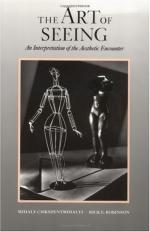|
This section contains 2,046 words (approx. 7 pages at 300 words per page) |

|
In recent analytic aesthetics, there have been two prominent questions about aesthetic judgments. One is how to distinguish aesthetic judgments from other judgments. Answering this question seems particularly urgent when an aesthetic judgment and a nonaesthetic judgment about the same object are incongruent. In such a case it seems that an object might be judged to have aesthetic value but also to be negatively judged, say ethically or in terms of its practical use. A corollary question is whether the negative value of a nonaesthetic judgment should affect the allegedly purely aesthetic judgment.
The other prominent question, a question present at least since the eighteenth century, is actually two questions: first, whether aesthetic judgments are objective or subjective, and second, whether aesthetic judgments can be verified or otherwise substantiated. Somewhat curiously, perhaps, some philosophers have thought that even though such judgments are subjective, they are still...
|
This section contains 2,046 words (approx. 7 pages at 300 words per page) |

|


